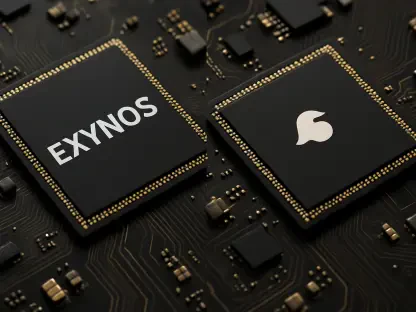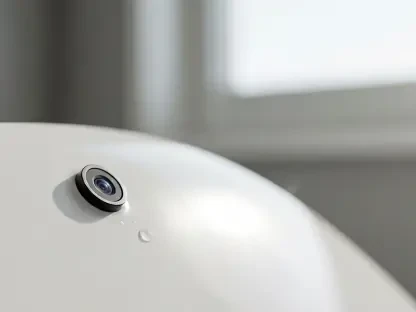Air quality has become a pressing concern globally, as urbanization and industrialization coincide with a growing awareness of the health impacts from pollution. The Dyson Purifier Cool Gen1 TP10 emerges as a significant innovation in the realm of air purification, presenting a dual solution for clean air and efficient cooling. This review delves into the technology’s capabilities, offering insights into its design, functionality, and market influence. With the increasing focus on solutions to reduce airborne pollutants, devices like the TP10 play a crucial role in addressing modern challenges.
Unveiling Enhanced Air Purification and Cooling
The Dyson Purifier Cool Gen1 TP10 stands at the intersection of aesthetic elegance and technological advancement. This device exemplifies Dyson’s commitment to designing visually appealing products without compromising on performance. The TP10’s sleek, bladeless design is not only modern but also effective, offering significant convenience by being easy to clean. It’s a testament to effective industrial design in the tech landscape, blending seamlessly into any environment while ensuring operational efficiency.
The device employs a high-grade HEPA #3 filter alongside activated carbon filters, capturing a startling 99.95% of airborne particles as small as 0.2 microns. Such precision in air filtration ensures that common pollutants, including dust, pollen, and certain bacteria, are effectively trapped, contributing to healthier indoor air quality. The real-time PM2.5 and PM10 detection further enhances user experience, displaying air quality levels through an intuitive LCD screen. This integration of technology provides users with instant feedback, emphasizing transparency and control over their environment.
Defining Cooling and Circulation Performance
Dyson’s TP10 is not merely a purifier; it efficiently doubles as a cooling fan. Equipped with ten speed settings and adjustable oscillation angles, it offers a tailored air circulation experience that caters to varied preferences. Notably, it achieves this while maintaining remarkably low noise levels, making it ideal for quiet environments such as bedrooms or offices. The silent operation sets it apart from competing products, an advantage highly appreciated by users seeking a noise-free experience alongside functional air cooling.
Despite its high-tech lineage, the TP10 faces certain limitations in connectivity. Unlike some cutting-edge products in the market, it lacks smart functionalities like app compatibility, confining control to the included remote. The magnetized remote sits conveniently on the unit, yet the absence of app-based control can be a shortcoming for tech-savvy users who seek seamless control integration. In an era increasingly dominated by connectivity and smart homes, this represents an area where the TP10 might see future evolution.
Observing Industry Trends and Applications
Recent innovations in the air purification sector highlight an industry shifting toward combined functionality and smart integration. The TP10 fits within this evolving trend but leans more heavily on operational performance and design than on technological connectivity. While consumers increasingly demand app-enabled devices, the TP10 remains relevant due to its superior air filtration and cooling abilities, appealing to those prioritizing immediate function over peripheral technological advances.
In practical applications, the TP10 finds utility across diverse sectors, from urban residential spaces aiming to combat pollution effects to office environments maintaining air quality standards for employee well-being. Its robust design and reliable performance make it suitable for these varied uses. Such adaptability showcases its utility beyond just home use, positioning it advantageously in the market.
Recognizing Challenges and Areas for Improvement
Despite its strengths, the Dyson Purifier Cool Gen1 TP10 does encounter challenges, primarily related to its connectivity limitations. The lack of app-based controls and smart integration restricts its appeal to tech-forward consumers. Moreover, users face recurrent filter replacement needs, which can add to the long-term ownership cost. Addressing these challenges, Dyson has opportunities to enhance the TP10’s appeal by adopting more integrated smart technologies, potentially broadening its user base.
Market competition presents another hurdle, as rivals may offer comparable functionality with additional features like remote app controls. To sustain its market position, the TP10 may benefit from evolving to include emerging technologies without losing its core strengths.
Pathways Toward Future Developments
Looking ahead, the Dyson Purifier Cool Gen1 TP10 stands poised for a promising role in personal and professional spaces as technological adjustments and enhancements are made. It embodies the potential for continuous improvements in air purification technology, hinting at future iterations featuring enhanced connectivity and even more energy-efficient operations. As consumer expectations evolve, it seems likely that Dyson will innovate the TP10’s capabilities to meet new demands.
Continued investment in research and advancements in materials and sensor technology can lead to breakthroughs that enhance air purification efficiency. As indoor air quality becomes an increasingly critical focus, devices like the TP10 could lead the charge in establishing new industry standards.
Conclusion: Assessing the Impact and Future Potential
In summation, the Dyson Purifier Cool Gen1 TP10 has cemented its place as a pivotal player in the air purification and cooling market. Its superior design and outstanding functionality highlight its capacity to significantly improve indoor air quality. However, its appeal has been somewhat tempered by a lack of connectivity features, challenging its competitiveness with more tech-savvy alternatives. Moving forward, the TP10’s success will likely depend on its ability to adapt to emerging smart technologies, potentially redefining air purification and smart home integration. In the end, the TP10 demonstrates that the demand for clean air solutions remains robust and continues to shape innovation paths in the industry.









